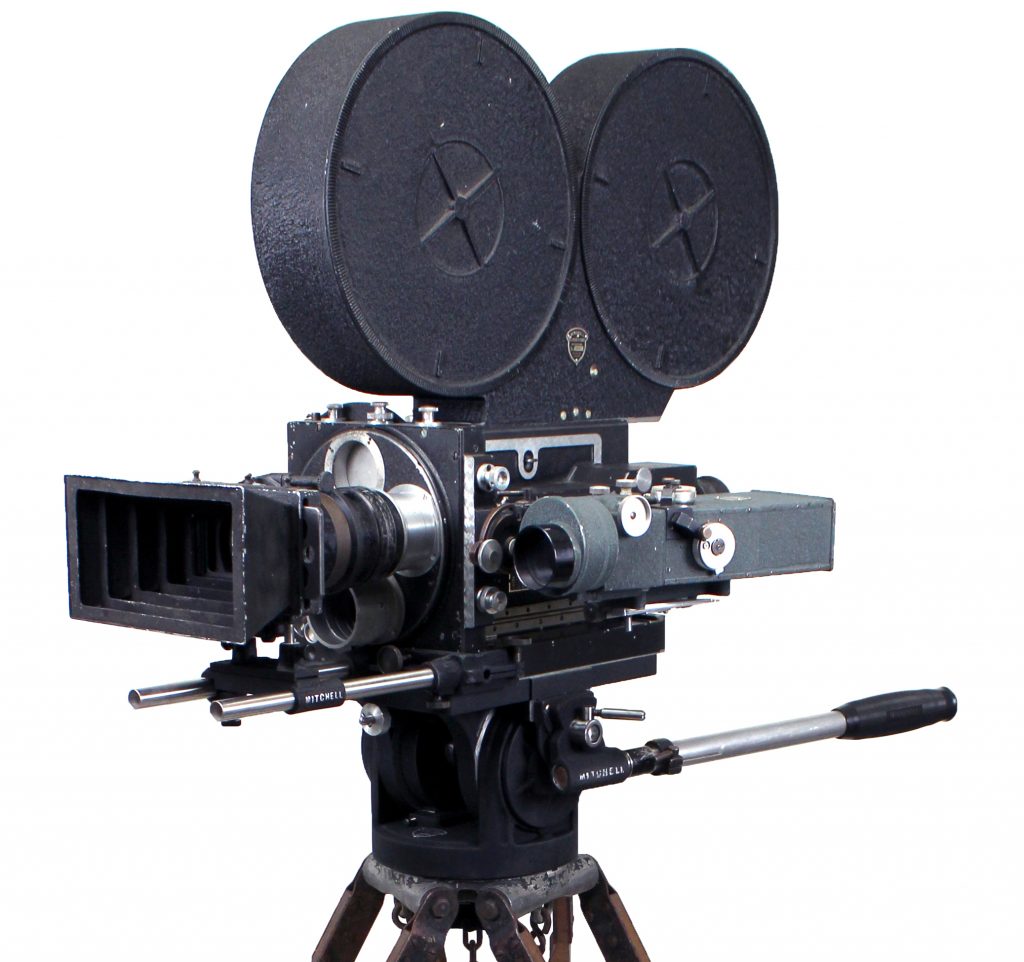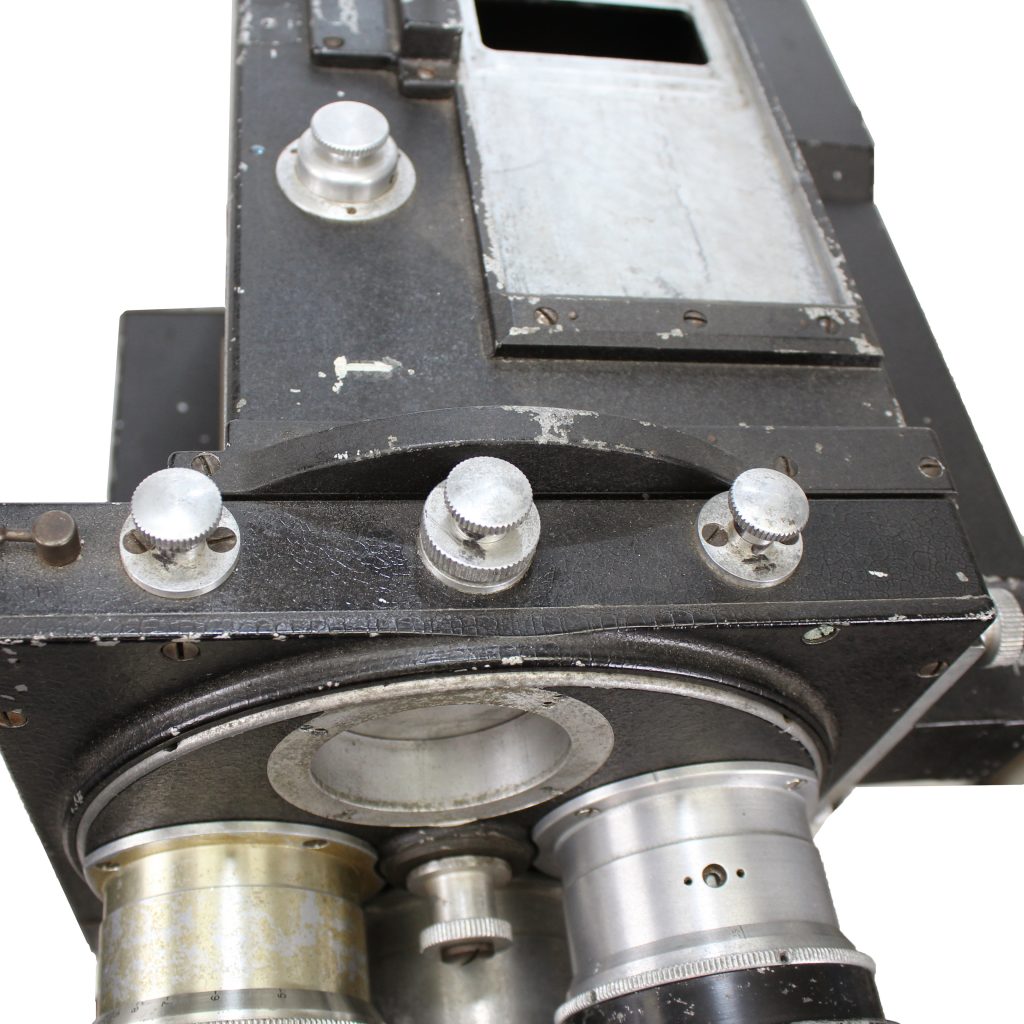The motion picture industry was in a period of transition in the late 1920s. Sound films were set to remake the previously silent industry, changing everything about how movies were made and exhibited. As the popularity of movies rose, bigger theaters were built to accommodate the ever increasing audiences. The Roxy Theater in New York, which opened its doors in 1927, could seat more than 6000 people in its massive auditorium. Bigger theaters called for bigger screens, but the 35mm film of the day could only be magnified to a certain point before the grain became too obtrusive. Additionally, experiments into early television transmission made industry leaders nervous about the future of their theaters.
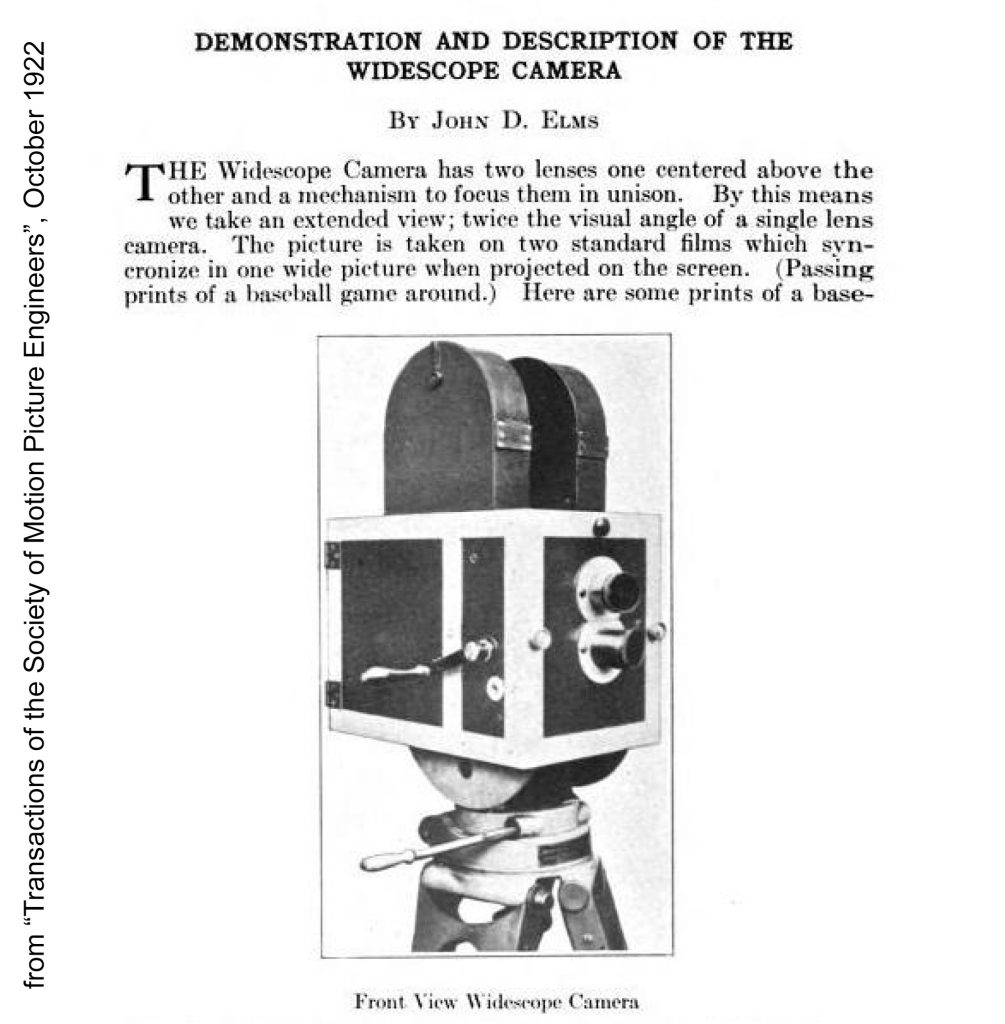
William Fox, head of the Fox Film Corporation, sought a solution to these problems by developing a system that would project higher fidelity images on larger screens. Previously, Fox had attempted to corner the sound-on-film market by purchasing the Movietone sound-on-film system from developers Theodore Case and Earl Sponable. He had also acquired the American rights to the German Tri-Ergon patents, an essential part of the contemporary sound systems. In a similar strategy, Fox hoped to develop a widescreen format that he could license to the rest of the industry. To this end, Fox hired Sponable to be his head of research and development at the newly established Fox Case Corporation. Sponable continued in this post from 1926 until he retired in 1962.
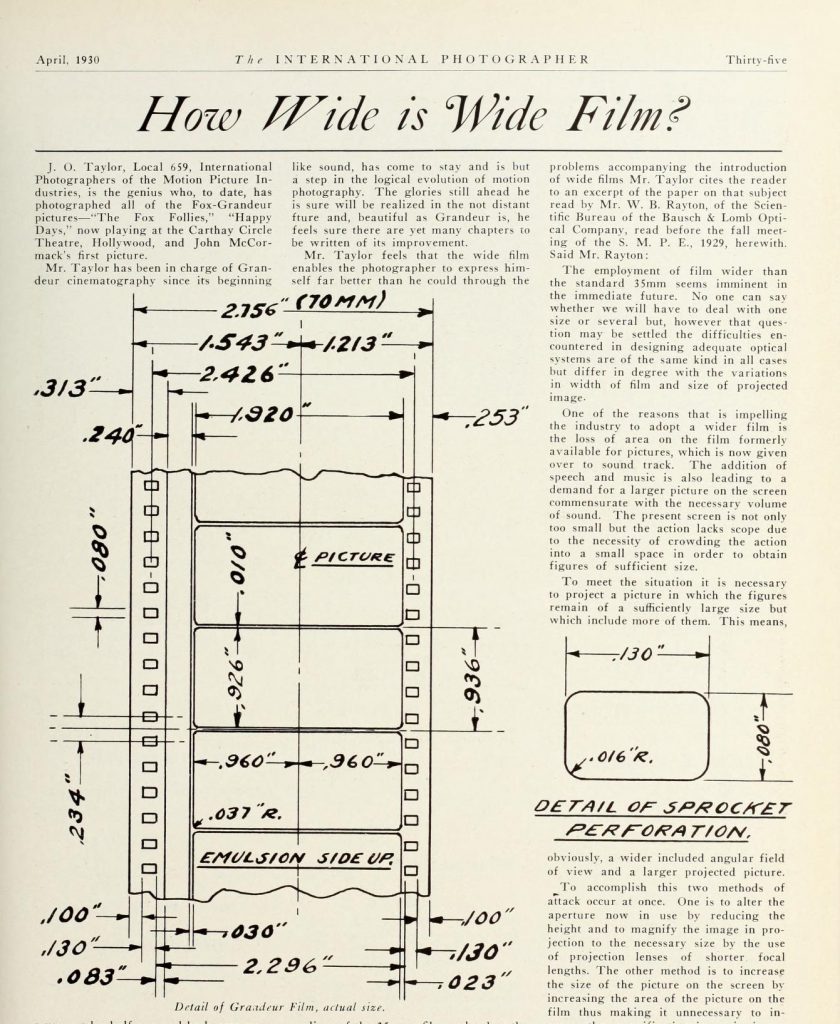
In August 1927, Courtland Smith, manager of the Fox Case Corporation and Vice President in charge of Newsreels, was approached by William Waddell and John D. Elms to arrange a demonstration of Elms’ Widescope camera system. Developed by Mr. Elms in 1922, the initial version of the Widescope camera used two divergent lenses set at right angles to two strips of 35mm film and focused both lenses simultaneously. When exhibited, two projectors are linked together to project both strips of film at the same time, thus creating a widescreen image. Sponable found this system impractical, but Fox and Smith were impressed enough to license the system from Elms and hire him to work in their facility to further develop his camera.
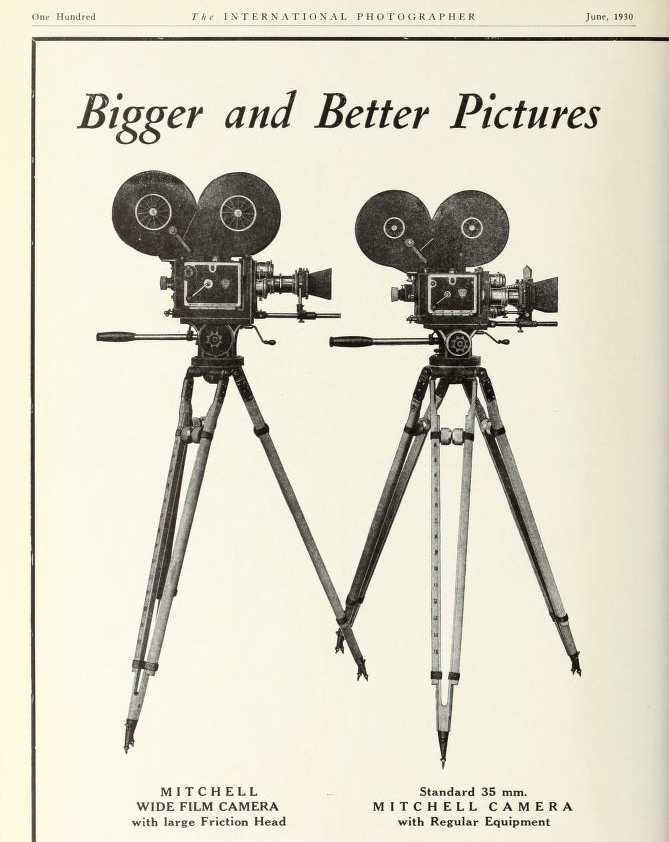
Elms began work on the second iteration of his Widescope camera, which was to include a sound-on-film system, in September 1927 at the job shop of Stoeger & Company in New York. This version of the camera used a “revolving lens” that photographed an image on a curved film plane. Elms patented this design that December and the system was tested in February 1928. Correspondence suggests that the Elms revolving lens Grandeur camera and a Mitchell camera were sent to photograph a short subject at Niagara Falls in August 1928. It seems likely that this short subject was one of the items shown at the first Grandeur presentation. A third and final version of Elms’ camera was begun in October 1928 at the J.M. Wall Machine Company, with Elms’ son Charles in the lead. This camera also employed a revolving lens, and work on the camera continued through August 1929, when it was abandoned.
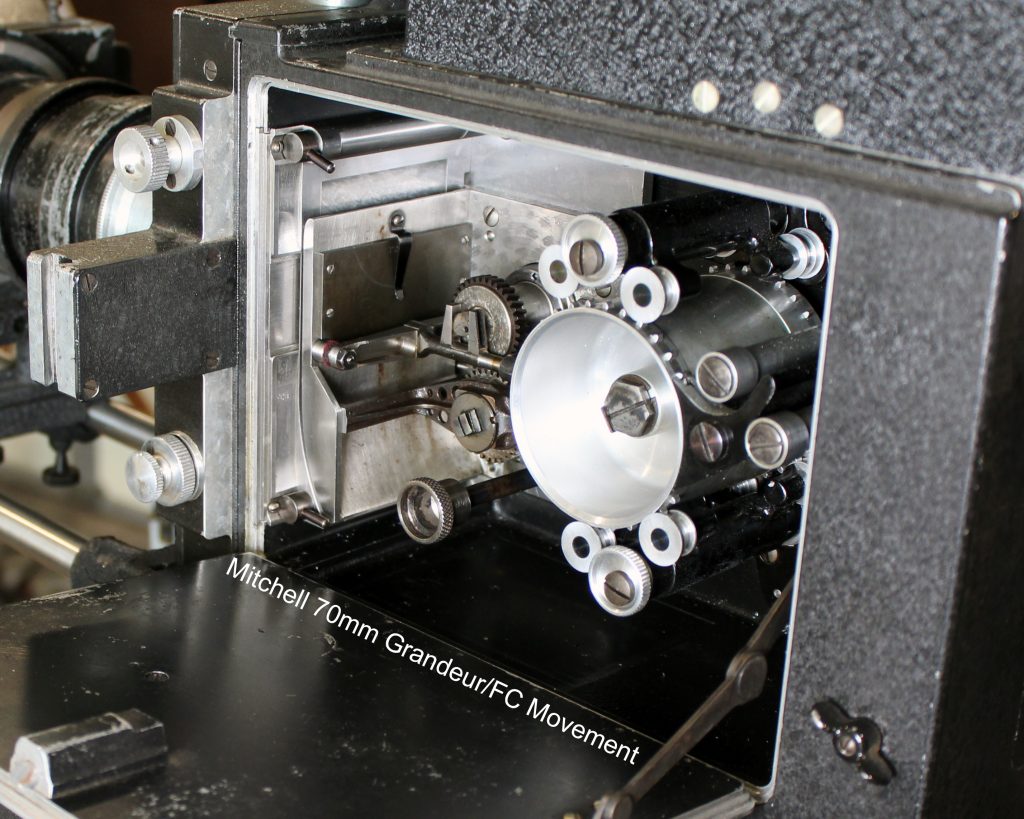
Sponable did not find any of the Widescope designs commercially viable, and so began his own work on a “regular news camera for Grandeur film” in January 1928. This camera was successfully completed in the shop of the J.M. Wall Machine Company in early February 1929. At the same time, the Mitchell Camera Corporation was contracted in February 1928 to modify a Mitchell Standard to accommodate 70mm Grandeur film. The camera was completed that August and tests made with it were a success. This camera, known as the Mitchell FC, or Fox Camera, would become the main wide film camera the Fox Film Corporation would use to produce their Grandeur films.
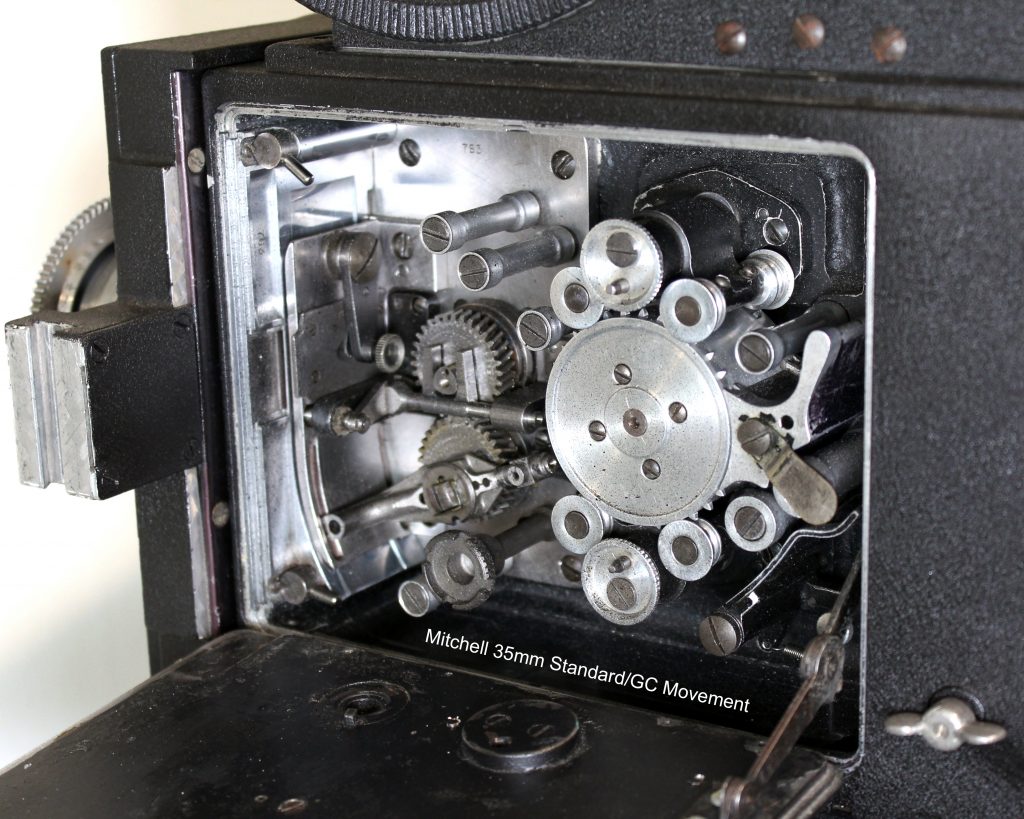
Evidence from memos and correspondence from Sponable, Smith, Fox, and others involved in the Grandeur project suggest that the first Widescope revolving lens camera was used to film a short subject of Niagara Falls in August 1928. An inventory of Grandeur equipment conducted in November 1929 indicates that two single system Grandeur cameras were on order from Wall. Two Grandeur sound cameras had been completed and one was currently in use on the Benjamin Stoloff production “Happy Days”. These cameras, we believe, were among those built by the J.M. Wall Machine Company. Additionally, invoices show that three Mitchell FC cameras were ordered in December 1928, and ten more in June 1929. Advertising from Mitchell in “American Cinematographer” indicates that their FC cameras were used to film all four Fox Grandeur features, “Fox Movietone Follies of 1929”, “Happy Days”, “Song O’ My Heart”, and “The Big Trail”.

